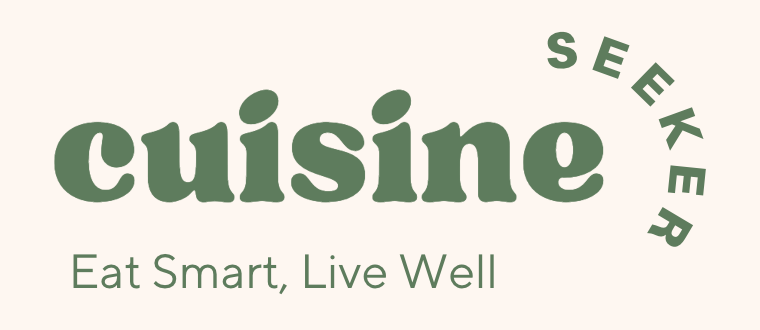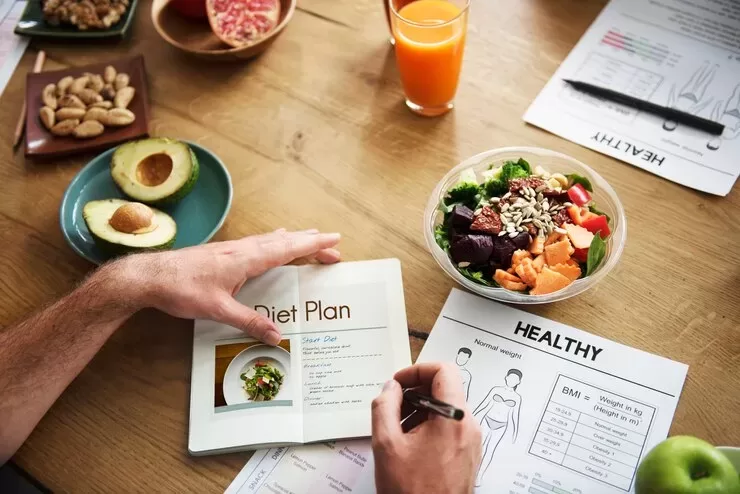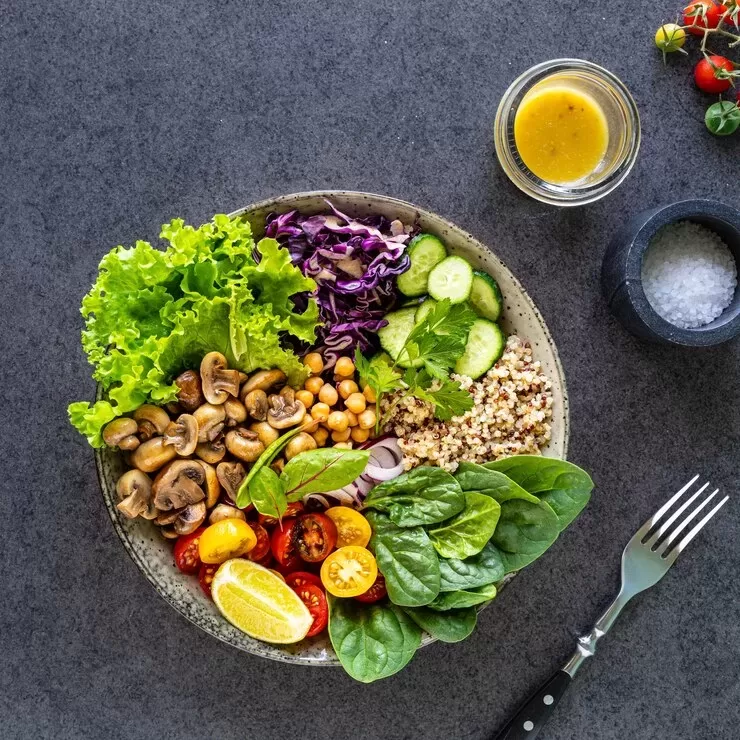Curious about what you can eat on a paleo vegan diet? Need a foolproof meal plan to get started? Or perhaps you’re looking for delicious vegan paleo recipes that won’t leave you feeling deprived? We’ll delve into the basics of the paleo vegan diet, provide you with comprehensive meal plans, and share inspiring recipes that will make this lifestyle a joy.
Imagine a diet where you’re feasting on grass-fed meats, wild-caught fish, fruits, vegetables, nuts, and seeds, all while avoiding grains, legumes, dairy, and processed foods. Sounds like a challenge, right? But the benefits are immense.
So, are you ready to embark on this exciting journey and discover the benefits of a paleo vegan lifestyle? Let’s dive in and discover how you can embrace this healthy and compassionate way of living.
Understanding the Basics
What is the paleo diet?
The paleo diet is a dietary approach that mimics the diet of our hunter-gatherer ancestors. It focuses on consuming whole, unprocessed foods like lean meats, seafood, fruits, vegetables, nuts, and seeds, while avoiding grains, legumes, dairy, and refined sugars. The idea is to align our diet with what our bodies may have evolved to eat, promoting optimal health and well-being.
What is a vegan diet?
A vegan diet is a way of eating that excludes all animal products. This means no meat, poultry, fish, eggs, dairy, or any other ingredients derived from animals. Vegans typically rely on plant-based foods like fruits, vegetables, grains, legumes, nuts, and seeds for their nutrition. This dietary choice is often driven by ethical, environmental, or health concerns.
Combining the two: paleo vegan
Combining the paleo and vegan diets results in the pegan lifestyle. This approach focuses on consuming whole, unprocessed foods like fruits, vegetables, nuts, seeds, lean meats, and seafood, while excluding all animal products.
It’s a dietary choice that aims to align with our ancestral diet while adhering to ethical and environmental concerns. Paleo vegans often emphasize grass-fed meats, wild-caught fish, and organic produce to ensure the highest quality of nutrients.
Benefits of a paleo vegan lifestyle
A paleo vegan lifestyle offers a multitude of benefits for your overall health and well-being. By combining the principles of the paleo and vegan diets, you can experience the following advantages:
- Improved digestion: The focus on whole, unprocessed foods can help support a healthy gut and improve digestion.
- Weight management: The elimination of processed foods and refined sugars can aid in weight loss or maintenance.
- Increased energy levels: The nutrient-dense nature of the paleo vegan diet can provide sustained energy throughout the day.
- Reduced inflammation: The emphasis on anti-inflammatory foods can help alleviate chronic inflammation.
- Enhanced heart health: A paleo vegan diet may help lower blood pressure and cholesterol levels.
- Improved skin health: The abundance of antioxidants in plant-based foods can contribute to healthier skin.
- Environmental benefits: By reducing consumption of animal products, you can contribute to a more sustainable planet.
- Ethical considerations: A paleo vegan lifestyle aligns with ethical concerns about animal welfare and the environment.
Creating a Paleo Vegan Meal Plan
Essential nutrients
A paleo vegan diet provides a wide range of essential nutrients to support optimal health. Here are some key nutrients to focus on:
- Protein: While meat is often associated with protein, there are plenty of plant-based sources like beans, lentils, tofu, tempeh, and nuts that can provide adequate protein.
- Iron: Leafy greens, legumes, nuts, and seeds are excellent sources of iron. Pair them with vitamin C-rich foods to enhance absorption.
- Calcium: Incorporate leafy greens, fortified plant-based milk, and sesame seeds into your diet to meet your calcium needs.
- Vitamin B12: As a vegan, you’ll need to supplement with vitamin B12, as it is primarily found in animal products.
- Omega-3 fatty acids: Algae-based omega-3 supplements or foods like flaxseeds, chia seeds, and walnuts can provide essential omega-3s.
- Zinc: Legumes, nuts, seeds, and whole grains are good sources of zinc.
- Fiber: A paleo vegan diet is naturally high in fiber from fruits, vegetables, whole grains, and legumes.
- Antioxidants: The abundance of plant-based foods in a paleo vegan diet provides a variety of antioxidants, including vitamins C, E, and beta-carotene.
By ensuring you consume a variety of these essential nutrients, you can maintain a healthy and balanced paleo vegan lifestyle.
Food list for a paleo vegan diet
A paleo vegan diet focuses on whole, unprocessed foods that align with both the paleo and vegan principles. Here’s a breakdown of the foods you can enjoy:
| Food Group | Examples |
| Fruits | Berries, apples, bananas, avocados, citrus fruits, dates, figs |
| Vegetables | Leafy greens, cruciferous vegetables, root vegetables, bell peppers, cucumbers, onions, garlic, ginger |
| Whole Grains | Brown rice, quinoa, oats |
| Nuts and Seeds | Almonds, walnuts, cashews, chia seeds, flaxseeds, hemp seeds, pumpkin seeds, sunflower seeds |
| Legumes | Lentils, chickpeas, black beans, kidney beans, pinto beans |
| Healthy Fats | Olive oil, avocado oil, coconut oil |
| Herbs and Spices | Garlic, ginger, onion, cumin, turmeric, paprika, chili powder, or black pepper, cinnamon, nutmeg, cardamom, vanilla extract, or maple syrup |
Remember to choose organic and locally sourced produce whenever possible to minimize exposure to pesticides and support sustainable agriculture.
Sample 7-day meal plan
Here are some sample meal plans to help you get started on your paleo vegan journey. Remember to adjust these plans based on your individual needs and preferences.
| Day | Breakfast | Lunch | Dinner | Snacks |
| Monday | Oatmeal with berries and nuts | Rice and lentils | Vegan stuffed bell peppers with brown rice | Vegan Shepherd’s pie |
| Tuesday | Smoothie with spinach, banana, and almond milk | Vegan Thai peanut noodles | Chickpea curry with brown rice | Carrot sticks with hummus |
| Wednesday | Whole-grain toast with avocado and a side of fruit | Leftovers from dinner | Zucchini noodles with meat sauce | Celery sticks with peanut butter |
| Thursday | Paleo breakfast scramble | Paleo chicken salad | Sweet potato and kale hash | Grapefruit slices |
| Friday | Banana bread | Leftovers from dinner | Paleo beef and broccoli | Apple slices with almond butter |
| Saturday | Vegan tigernut flour pancakes | Pico de Gallo | Paleo baked salmon | Carrot sticks with hummus |
| Sunday | Oatmeal with berries and nuts | Leftovers from dinner | Cauliflower fried rice | Grapefruit slices |
Note: These are just examples, and you can customize them based on your preferences and dietary needs. Experiment with different ingredients and recipes to find what works best for you.
Tips for Success
Challenges and solutions
Embarking on a paleo vegan lifestyle can be a rewarding journey, but it may also present some challenges. Here are some common obstacles and potential solutions:
- Lack of variety: It can be easy to fall into a rut with your meals. To combat this, experiment with new recipes, explore different cuisines, and attend cooking classes.
- Social challenges: Eating out or attending social gatherings can be difficult when following a paleo vegan diet. Plan ahead by researching vegan-friendly restaurants or offering to bring a dish.
- Nutrient deficiencies: Ensuring you get enough of certain nutrients, such as vitamin B12 and iron, can be challenging. Supplement as needed and focus on incorporating nutrient-dense foods into your diet.
- Cost: Organic and locally sourced produce can be more expensive. Consider buying in bulk, exploring farmers’ markets, or growing your own food.
- Limited access to certain foods: Depending on your location, you may have difficulty finding specific paleo vegan products. Research online retailers or consider making your own.
By addressing these challenges and being proactive, you can successfully maintain a paleo vegan lifestyle and enjoy its numerous benefits.
Staying motivated
Staying motivated on a paleo vegan journey requires a combination of strategies. First, set realistic goals and celebrate your achievements, no matter how small. Find inspiration in online communities, cookbooks, and social media influencers.
Experiment with new recipes to keep things exciting. Remember, consistency is key, so don’t get discouraged by setbacks. Focus on the positive changes you’re experiencing, such as improved energy, digestion, and overall well-being.
FAQs
Is it possible to be paleo and vegan?
Yes, it’s entirely possible to be both paleo and vegan. This combination focuses on whole, unprocessed foods like fruits, vegetables, nuts, seeds, lean meats, and seafood, while excluding all animal products.
How do I start a paleo lifestyle?
To start a paleo lifestyle, gradually incorporate more paleo-approved foods into your diet while reducing your intake of grains, legumes, dairy, and processed foods. Focus on consuming whole, unprocessed foods like fruits, vegetables, lean meats, seafood, nuts, and seeds.
What are 5 negatives from the paleo diet?
While the paleo diet offers many benefits, it also has some potential drawbacks, including nutrient deficiencies, high cost, social challenges, digestive issues, and sustainability concerns.
How do I start a raw vegan lifestyle?
To start a raw vegan lifestyle, gradually increase your intake of raw fruits, vegetables, nuts, and seeds while reducing your consumption of cooked foods. Focus on consuming foods in their natural state, avoiding any processing or heating that alters their nutritional value.





